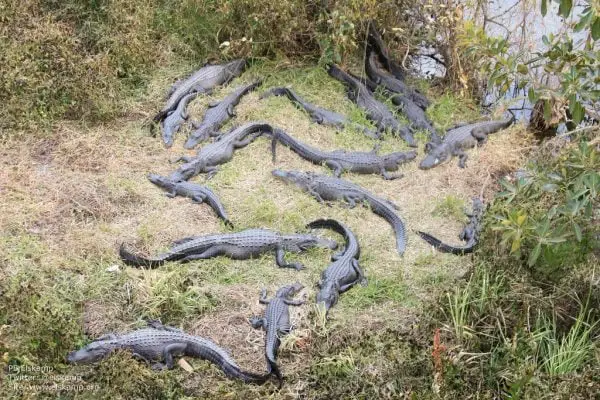Often associated with farmyards and muddy patches, hogs, also known as pigs, hold a surprisingly diverse and fascinating presence in the animal kingdom. Beyond their gruff snorts and playful wallowing, lies a complex social structure reflected in the unique collective nouns used to describe them. By exploring these terms, we embark on a journey beyond the sty, delving into the intriguing world of hog behavior and its vital role within the ecosystem.
Collective Nouns for Hogs
While “drift” may be the most widely used collective noun for hogs, encompassing a large group moving together, other terms paint a more nuanced picture depending on the context:
- Drift: This term signifies a large and loosely organized group of hogs moving in a single direction, often in search of food or water. It evokes a sense of unhurried movement, shared purpose, and collective exploration, highlighting the coordinated foraging strategies employed by these groups.
Example: Across the sun-dappled fields, a drift of hogs lumbered along, their snouts rooting through the undergrowth and their tails curled upward in a playful dance. Their focused movements and synchronized exploration showcased their efficient foraging techniques and cooperative spirit.
- Sounder: This term signifies a stable social unit of hogs living together in a specific area, often consisting of females, their young, and a dominant male. It evokes a sense of community, shared responsibility, and social cohesion, highlighting the intricate social dynamics and family structure within these groups.
Example: Nestled deep within the wooded area, a sounder of hogs enjoyed a peaceful afternoon. Mothers nuzzled their piglets, while older siblings playfully chased each other, showcasing the strong bonds and shared responsibilities within this close-knit group.
- Passel: This term, primarily used in the southern United States, signifies a large and loosely organized group of hogs, similar to a drift but with a more informal connotation. It evokes a sense of casual movement, abundance, and regional flair, adding a touch of local flavor to the description of these groups.
Example: As the golden hues of sunset painted the sky, a passel of hogs emerged from the cornfield, their bellies full and their movements relaxed. Their carefree demeanor and leisurely stroll captured the essence of a leisurely evening spent amongst family and friends.
- Team: While less common, the term “team” signifies a group of hogs working together to achieve a specific goal. It evokes a sense of collaboration, shared effort, and problem-solving, highlighting the potential for cooperation and intelligence displayed by these animals.
Example: Facing a challenging obstacle course designed to test their foraging skills, a team of hogs displayed remarkable teamwork. They nudged, grunted, and collaborated, their combined efforts ultimately leading them to the hidden treats, showcasing their ability to work together towards a common goal.
Interesting Facts About Hogs
Understanding these collective nouns goes beyond mere vocabulary; it allows us to appreciate the complexities of hog behavior and their vital role within the ecosystem:
Masters of Foraging: Hogs possess a remarkable sense of smell, allowing them to locate buried food sources with incredible accuracy. Their powerful snouts and strong forelimbs enable them to efficiently churn through soil and vegetation, playing a crucial role in nutrient cycling and seed dispersal.
Adaptable Survivors: Hogs exhibit remarkable adaptability, thriving in diverse environments, from dense forests to wide-open plains. Their omnivorous diet allows them to consume a wide variety of food sources, ensuring their survival in various ecosystems.
Facing Threats: Despite their resilience, hogs face numerous threats, including habitat loss, disease, and human-wildlife conflict. Conservation efforts are crucial to ensure their survival and continued contribution to the ecological balance.
Cultural Significance: Hogs hold significant cultural and symbolic meaning across various societies. In some cultures, they represent prosperity and abundance, while in others, they symbolize strength and determination. Understanding their cultural significance fosters respect for these intelligent and resourceful creatures.
Final Thoughts
From the meandering “drift” seeking sustenance to the tightly knit “sounder” fostering strong bonds, the diverse collective nouns for hogs offer a glimpse into their multifaceted lives and enduring presence in the animal kingdom. By appreciating these terms, understanding the intricacies of hog behavior, and addressing the challenges they face, we can ensure that these captivating creatures continue to roam the fields and inspire curiosity for generations to come.
Also Read:






